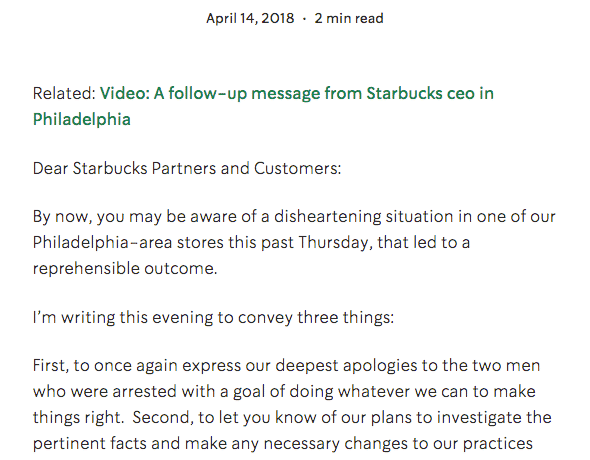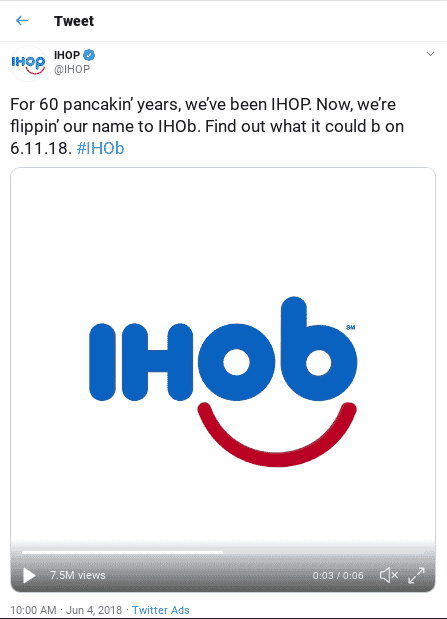If you watched Kerry Washington as crisis management expert Olivia Pope on Scandal, then you know that a public relations crisis can be a messy affair for a company. One misstep can quickly spiral into a PR disaster that wreaks havoc on a brand’s reputation. A business communication failure example can be found in every industry, but following internal communication best practices can help your company avoid them.
Learn how the right software can help your company avoid common business communication pitfalls.
What Are Business Communication Failures?
When an organization’s internal stakeholders are aligned on their mission and clearly understand objectives and strategy, it results in positive business outcomes.
Successful business communication relies on several key factors:
- Transparent communication
- Authentic leadership
- The inclusion of every employee in communication for a bottom-up leadership style
- Silo-free platforms for seamless information exchange and workflows
The two must-haves of effective crisis management are a plan and a team. But even the best-laid plans can fail. Business communication breakdowns can happen within any organization that stray from internal communication best practices.
The results might just create a small glitch in operations, but sometimes they can have more serious repercussions, such as:
- Disrupted workflows
- Negatively impacted brand reputation
- Drive down value proposition
Whether it’s a product recall, a data breach, or a customer interaction that went viral (think of the infamous video of a man getting dragged off a United flight when they overbooked the plane), companies big and small alike are vulnerable to a controversial communication crisis. As Warren Buffet said, “It takes twenty years to build a reputation and five minutes to ruin it.”
Here are five examples of business communication gone wrong and how the companies involved responded.
1) Nike: Business Communication Failure at the Top
Since 1971, when the Swoosh logo was officially unveiled, Nike has been one of the biggest names in the sneaker world. With endorsement deals with some of the most famous names in sports, Nike solidified its place as the leader of the pack in the footwear industry and has an annual profit of $36 billion.
But despite its spot as one of the world’s most profitable apparel brands, Nike has had a few PR crises that required major repair.
In 2018, female employees spoke out about the male-dominated culture that fostered harassment and discrimination in the workplace. It started as an anonymous survey by a group of women at the company’s Beaverton, Oregon headquarters about their experiences. The disturbing results were delivered to CEO Mark Parker.
Some examples of internal communication problems that went wrong here include:
- It took a renegade survey by a group of employees to reveal this toxic culture
- Lack of trust in HR
- A leader who says he was unaware of the problems
- Inefficient methods of bottom-up communication

Nike took dramatic steps to fix these issues by firing C-Suite executives, including the head of diversity and inclusion, implementing mandatory management training, a commitment to a more inclusive culture, and an overhaul of their HR procedures and internal reporting processes.
Pro tip: Be proactive and get ahead of the narrative through authentic, transparent communication.
2) Wells Fargo: Learn to Accept Responsibility
In any business, it’s always good to be agile and ready to pivot to a crisis communication plan when the time comes. When it happened to Wells Fargo, the second-largest bank in the United States, they only seemed to dig themselves into a deeper hole that made it harder to bounce back.
It started in 2016 when authorities, like the Consumer Financial Protection Bureau, were alerted to potential fraud. Responding to a top-down demand for aggressive customer quotas, employees at local branches created upwards of two million fake bank accounts in customers’ names but without their consent. The bank was fined $185 million.
Wells Fargo’s leadership response potentially hurt the banks’ image as much as the initial scandal.
- The company’s early public statements neglected to accept any responsibility, nor did they contain apologies. Instead, they downplayed the fraud. An apology only came from the CEO when he was brought to testify before the U.S. Senate Banking Committee.
- Leadership blamed, then fired, 5,300 low-level employees.
- The CEO sold $61 million of his Wells Fargo stock the month before the investigation began.
How to handle a situation like this? An immediate, proactive response.
- Thoughtful, authentic, direct communication to both internal stakeholders to rebuild trust and establish an open culture
- Apologies to the public for what happened
- Accept responsibility
- Take high-profile actions that change policies and procedures to ensure this will never happen again
Wells Fargo is still in business, but their reputation remains scarred.
3) Starbucks: Align Every Employee to Core Values
In April 2018, two men went to a Philadelphia Starbucks to meet a friend. They sat at a table waiting to order and asked to use the restroom. The result? The manager on duty called the police and the two African American men were—wrongfully—arrested for trespassing.
The video of the arrest went viral and by the next day, #boycottStarbucks was trending on social media. What might have started as a store manager attempting to follow a company policy turned into a racially-biased encounter that even the Starbucks CEO called a “reprehensible outcome.”
That CEO, Kevin Johnson, instantly released a statement that included a direct apology to the two men. To employees and customers, he said, “You can and should expect more from us. We will learn from this and be better.”

He also outlined a list of internal actions the company would take. A month later, Starbucks closed 8,000 stores to train 175,000 employees on racial bias and how to make every customer feel like they belong.
- Realign the entire organization to the company’s core values and mission.
- Encourage bottom-up feedback from partners on how the company was doing from their perspective.
- Adopt best practices and review policies that create a culture of inclusion and equality.
Recognizing the major failure in their internal communication procedures and how their “practices and training led to a bad outcome”, Starbucks did an internal investigation into their policies. It was widely seen as a transparent, authentic response.
Pro tip: Don’t just pay lip service to your employees and your customers. Learn from your mistakes and take action to revise your policies.
4) Yahoo: A Deafening Silence Amplifies a Crisis
In September 2016, Yahoo leadership acknowledged a 2014 data breach that exposed the accounts of 500 million users to hackers. Three months later in December, the company then announced that there was another breach from 2013 that affected one billion accounts. Nearly a year later, in October 2017, Yahoo announced that, in fact, the data breach affected all 3 billion of its customers.
Yahoo’s business communication failure? Not communicating. It turned out that company insiders actually knew about the breach when it happened years earlier but kept it under wraps.
Not only was this extremely poor business communication, but poor risk management. Running a company means running a gauntlet of risks. Companies need to have a risk management framework in place to prepare for any number of threats. Data breaches happen every 39 seconds. They are a risk a tech company like Yahoo was aware of and should have been prepared for.
An internal investigation found that “failures in communication, management, inquiry, and internal reporting contributed to the lack of proper comprehension and handling of the 2014 Security Incident.” By not addressing a crisis with internal stakeholders and customers, companies with communication issues face:
- Decrease in valuation: In this case, Yahoo was in the process of selling a piece of their company to Verizon who shaved $350 million off the asking price due to this mistake.
- Damaged brand reputation: People are less willing to trust a company who not only mishandles their personal information, but doesn’t let them know their names, phone numbers, and passwords were stolen. With plenty of alternative search engines and email providers, Yahoo’s failure to communicate most likely resulted in a loss of users.
- Loss of employee trust: Trust is a big-ticket item that delivers high employee confidence and engagement. A moment like this makes employees question the cultures and values of the organization they work for.
5) IHOP: A Communication Failure Turns Into a Feeding Frenzy
Not every business communication failure turns into a scandal. Sometimes they turn into great PR opportunities.

When IHOP announced it was changing its name to IHOB, the social media stunt to plug its new menu item (burgers) turned into an unlikely crisis. Its loyal customers were thrown into a frenzy, upset that their favorite pancake place was changing.
IHOP took the communication failure and ran with it, using humor to address the ensuing chaos. What could have put the company in the spotlight for the first time in decades, attracted new customers, and quadrupled burger sales? IHOP took hold of the communication and flipped the narrative, made it fun, and, most importantly, reassured customers that it was still the same brand they had grown to love.
Business communication failures can lead to a serious PR crisis for any company. But business communication done right can also save a company’s reputation without any need to call Olivia Pope.
Get the ultimate toolkit our customers are using every day to connect with their entire workforce. Free templates included!
Most Frequently Asked Questions
Miscommunication occurs when communication is not effective. This is the case when the intent of a message conveyed to someone is misunderstood.
This blog post covers miscommunication examples from Nike, Wells Fargo, Starbucks, Yahoo, and IHOP.




